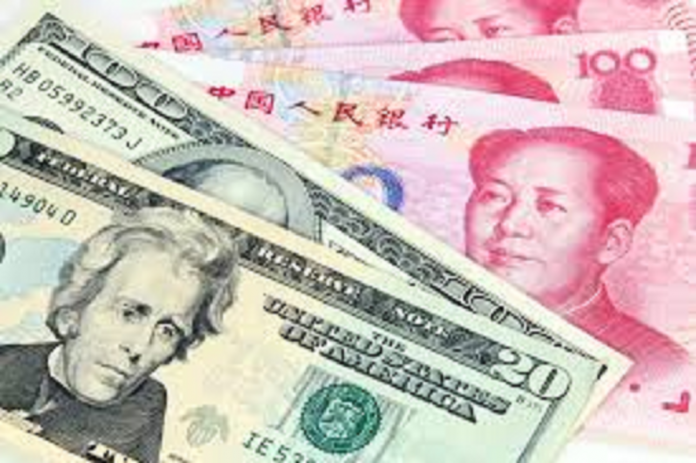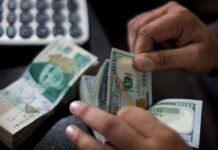
SHANGHAI: China’s yuan plunged to a more than one year low against the dollar on Friday after the central bank fixed a weak midpoint, but traders said major state banks sold dollars during morning trading which slowed the fall.
The People’s Bank of China lowered its yuan midpoint for the seventh straight trading day to 6.7671 per dollar on Friday, 605 pips or 0.9 percent weaker than the previous fix of 6.7066.
The latest bout of yuan weakness, catalyzed by concerns over the brewing China-U.S. trade war and a slowing Chinese economy, has seen the yuan shed 7.6 percent of its value against the dollar since the end of the first quarter of this year.
Friday’s fixing was the lowest since July 14, 2017 and represented the biggest one-day weakening in percentage terms since June 27, 2016.
The midpoint largely matched market forecasts, traders said, an indication that the authorities did not appear eager to hit the brakes on the yuan’s fall.
Later, though, four traders said they had seen major state-owned banks selling dollars and propping up the yuan.
“Big banks were offering dollar liquidity onshore and offshore, instead of only selling onshore as what they used to do. In this case, it could have better effect,” said one of the traders.
Another trader said he saw state banks selling dollars onshore at around 6.81 per dollar. The dollar selling had the effect of causing the yuan to pull back from its downhill dash.
Traders and economists say they suspect big state-owned banks sometimes buy or sell currency to influence the exchange rate as a form of intervention on behalf of the central bank.
Complicating matters, U.S. President Donald Trump said in an interview on CNBC television overnight that he was concerned that the Chinese currency was “dropping like a rock” and the strong U.S. dollar “puts us at a disadvantage.”
The spot yuan market shrugged off the comments, though, opening at 6.7950 per dollar on Friday before weakening past 6.8 per dollar to a low of 6.8128 at one point.
As of 0345 GMT, it was trading at 6.7941, about 0.21 percent softer than the late-night closing price.
The spot rate is currently allowed to trade within a range of 2 percent above or below the official fixing on any given day.
Offshore the yuan was trading 0.4 percent weaker than the onshore spot at 6.8228 per dollar.
Although many in the market don’t think the authorities have drawn a firm line in the sand for the depreciating Chinese currency, some said they were not overly bearish for now.






